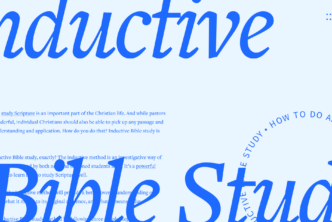In Matthew 5:17, Jesus says, “Do not think that I have come to abolish the Law or the Prophets. I did not come to abolish them but to fulfill them.”
What does this mean? What is the relationship between Jesus’ teaching and the Old Testament? Three ideas require definition here.
- The phrase “the Law or the Prophets” is a common way of referring to the Old Testament, Israel’s Bible in Jesus’ day. The “Law” comprised the first five books of the OT, and the “Prophets” captured the rest (see also Luke 24:27).
- The word “abolish” means “invalidate.” Jesus did not come to “do away with” or “repeal” the OT.1 Jesus respected the authority of the Law and the Prophets.
- The word “fulfill” is the hinge on which the meaning of this verse turns. While it’s tempting to read this as a reference to Jesus’ obedience to the law, the verb translated “fulfill” did not mean “obey.”2See the discussion in BDAG, 828–9.[/note] Rather, the word “fulfill” meant to bring to a designed goal, to fill up and complete, to bring to full expression. Jesus was declaring that he fulfilled the prophecies and even the patterns of Scripture; he showed forth their true meaning.3
This interpretation is consistent with how Matthew uses the word “fulfill” in the opening chapters of his Gospel. Jesus’ virgin birth “fulfills” the prophecy of Isaiah 7:14 (Matt 1:22–23) and also “fulfills” the pattern of the expectation of a divine ruler who will bring about God’s salvation (Isa 7–12). The slaughter of the innocents under Herod “fulfills” the pattern established in Jeremiah 31:15 when the mothers of Israel wept at Judah’s exile (Matt 2:17–18).
Matthew writes that Jesus’ deliverance from Herod “fulfills” Hosea 11:1, “Out of Egypt I called my son” (2:15). In Hosea’s original context, that sentence is just a historical statement referring to the Exodus. How then does Jesus fulfill it? Because Jesus fulfills the historical pattern of God rescuing his “Son” from danger (see Exod 4:22). The same could be said of the wordplay in Matthew 2:23: Jesus’ humble origins in Nazareth fulfill the OT theme of the Messiah’s humble origins (e.g., Isa 11:1).
Therefore, Jesus fulfills the specific prophecies of the Old Testament, and he also fulfills the storyline of the whole OT. That is why he represents Israel when he is baptized and then, like Israel, goes into the wilderness—though, unlike Israel, not because of disobedience. No, Christ perfectly obeys in our place. Like Moses going up Mount Sinai, Jesus “goes up on the mount” to deliver his famous Sermon on the Mount. Jesus is a new Moses. He has come to show how he “fulfills” the OT story in and by himself.
Jesus therefore has the authority to interpret the Old Testament and its laws, which is just what he goes on to do in Matthew 5:21–48. He hasn’t come to invalidate the Mosaic law, but to show where it was always pointing.
Jesus fulfills—fills out—the entire OT.
***
This article was originally published in the September/October 2022 issue of Bible Study Magazine. Slight adjustments, such as title and subheadings, may be the addition of an editor.
Related articles
- Why Obedience to Jesus Trumps All: Thoughts on the Sermon on the Mount
- Interview with Jonathan T. Pennington: The Sermon on the Mount and Human Flourishing
- The Twist in the Sermon on the Mount That You Probably Missed
Related resources
- See the standard Greek-English lexicon, “BDAG”: William Arndt et al., A Greek-English Lexicon of the New Testament and Other Early Christian Literature (Chicago: University of Chicago Press, 2000), 522.
- Johannes P. Louw and Eugene Albert Nida, Greek-English Lexicon of the New Testament: Based on Semantic Domains (New York: United Bible Societies, 1996), 2:199.
- This interpretation is consistent with how Matthew uses the word “fulfill” in the opening chapters of his Gospel.








